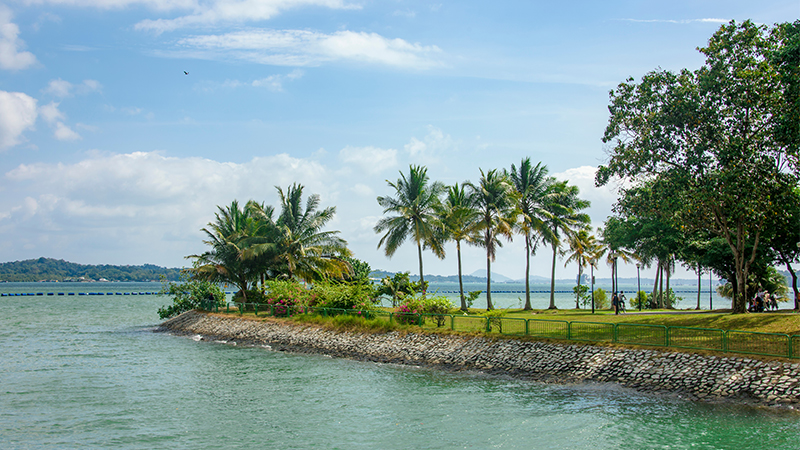Ever wondered where your Singapore district or neighbourhood got its name? Some are straightforward enough: Clementi comes from Sir Cecil Clementi Smith, Governor of the Straits Settlement from 1887 to 1893. Others, like the ten we’ve listed here, have a more intriguing background that sheds light on the history of Singapore and its different cultures and languages.
#1 Bukit Batok
Bukit Batok means “coughing hill” in Malay. One theory ties it to the sound of explosives echoing around the neighbourhood’s old granite quarries, another to the supposedly “cooler air” of this area leading to coughs and colds. It may more simply derive from batok, a Javanese word for coconuts, or batu, Malay for “stone”.

#2 Ang Mo Kio
Ang Mo Kio comes from a Hokkien phrase meaning “red-haired man’s bridge” (or, more colloquially, “the Caucasian’s bridge”). It may refer to John Turnball Thomson, a 19th-century land surveyor who built a bridge over the Kallang River. He also lent his name to Thomson Road.
#3 Dhoby Ghaut
Dhoby Ghaut was known in Tamil as “vannan theruvu”, or “street of the dhobies”. The reference was to Indian washermen (dhoby) who gathered here on the riverbank (ghat) to launder clothes for a military garrison stationed at the foot of Government Hill.
#4 Bedok
Bedok perhaps comes from “bedoh”. This Malay word refers to a large wooden drum that was beaten during celebrations and for the call to prayer. An alternative suggestion is that it relates to “biduk”, a type of fishing boat.
#5 Tampines
Tampines, notoriously challenging to pronounce (try “Tam-pe-nees”), is named after a tree, Streblus elongatus (“tempinis” in Malay), which produces white latex when cut. Once common in Singapore, the tree’s prized durable timber led to it almost becoming extinct.
#6 Pasir Ris
Pasir Ris roughly translates from Malay as “sand to shred”, referring most likely to the location’s sandy beach front. It appears as “Passier Reis” on an 1844 map by the land surveyor we mentioned earlier, John Turnball Thomson.
#7 Tiong Bahru
Tiong Bahru has a name that derives from two words: “tiong”, Hokkien for “grave”, and “bahru” (or baru), Malay for “new’. Chinese burial grounds surrounded the area in the past. Until just over a century ago, the road leading to the area was named Burial Ground Road.
#8 Kampong Glam
The name Kampong Glam comes from the cajeput, a type of paperbark tree referred to locally as “gelam”. Orang Laut people used its timber to make boats, and the bark for sails. The tree also had medicinal and culinary uses.
#9 Bras Basah
Bras Basah takes its name from the phrase “wet rice” in Malay (“beras basah”). Ships used to unload rice at a lagoon here, laying it out to dry on the banks of a freshwater stream. (Today, that stream is the Stamford Canal.)
#10 Siglap
Siglap is another whose name has Malay origins, this time deriving from “si-gelap” meaning “darkness that conceals”. The founding chieftain of the area is said to have bestowed the name, perhaps after the menacing thunderclouds that appeared when he landed, or even a full solar eclipse dating to 1821.
Read more about Singapore districts and neighbourhoods and hear from residents what they think about living there.
Don't miss out on the latest events, news and
competitions by signing up to our newsletter!
By signing up, you'll receive our weekly newsletter and offers which you can update or unsubscribe to anytime.



